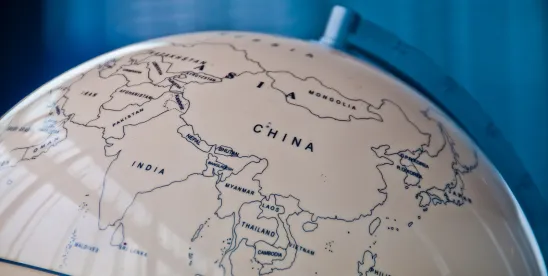On April 9, 2025, China’s State Council Information Office released a white paper entitled “China’s Position on Certain Issues in China-US Economic and Trade Relations” (关于中美经贸关系若干问题的中方立场) in response to the ongoing trade war. With respect to intellectual property, the white paper states that China has continuously improved intellectual property protection and prohibits forced technology transfer. The white paper appears to address allegations made in the America First Trade Policy and the Report to the President on the America First Trade Policy Executive Summary but not the more recent and detailed United States Trade Representative 2025 National Trade Estimate Report on Foreign Trade Barriers.
The following are IP-related excerpts from the Chinese version of the white paper. The full text of the white paper is available here (Chinese). An English version of the white paper is available here.
II. China conscientiously implements the first phase of the China-US economic and trade agreement
As a responsible major country, China has conscientiously fulfilled its obligations under the agreement, protected intellectual property rights, increased imports, and expanded market access, creating a good business environment for investors from all countries, including American companies, to participate in sharing the dividends of China’s economic development.
1. Continuously improving intellectual property protection
Innovation is the primary driving force for development, and protecting intellectual property rights is protecting innovation. China has taken multiple measures to protect trade secrets, protect pharmaceutical intellectual property rights, combat online infringements, and tighten intellectual property law enforcement, and has conscientiously implemented the relevant commitments in the intellectual property chapter of the agreement.
Strengthen the protection of trade secrets. In September 2020, the Supreme People’s Court issued the “Regulations on Several Issues Concerning the Application of Law in the Trial of Civil Cases of Infringement of Trade Secrets”, the Supreme People’s Court and the Supreme People’s Procuratorate issued the “Interpretation on Several Issues Concerning the Specific Application of Laws in Handling Criminal Cases of Infringement of Intellectual Property Rights (III)”, and the Supreme People’s Procuratorate and the Ministry of Public Security issued the “Decision on Amending the Regulations on the Standards for Filing and Prosecuting Criminal Cases under the Jurisdiction of Public Security Organs”. In December 2020, the National People’s Congress passed the Criminal Law Amendment. The above regulations cover the definition of the scope of prohibited acts that constitute infringement of trade secrets, the definition of criminal acts of theft of trade secrets, the application for temporary injunctions in cases of theft of trade secrets, and the adjustment of the threshold for initiating criminal investigations.
Improve the pharmaceutical intellectual property protection system. In October 2020, the Standing Committee of the National People’s Congress reviewed and adopted the decision to amend the Patent Law, adding relevant provisions on the early resolution mechanism for pharmaceutical patent disputes [patent linkage] and the patent term compensation system. In July 2021, the National Medical Products Administration and the National Intellectual Property Administration jointly issued the “Implementation Measures for the Early Resolution Mechanism for Pharmaceutical Patent Disputes (Trial)“, the National Intellectual Property Administration issued the “Administrative Adjudication Measures for the Early Resolution Mechanism for Pharmaceutical Patent Disputes“, and the Supreme People’s Court issued the “Regulations on Several Issues Concerning the Application of Law in Civil Cases of Patent Disputes Related to Drugs Applied for Registration“, establishing an early resolution mechanism for pharmaceutical patent disputes to ensure the effective implementation of the system. In December 2023, the State Council announced the decision to amend the Implementing Rules of the Patent Law, and the National Intellectual Property Administration simultaneously completed the revision of the patent examination guidelines and made detailed provisions on the patent term compensation system. In addition, in the revision of the patent examination guidelines completed by the National Intellectual Property Administration in 2021, the relevant content of supplementary experimental data was further improved.
Improve the trademark and geographical indication protection system. In April 2019, the Standing Committee of the National People’s Congress reviewed and adopted the decision to amend the Trademark Law, adding relevant content to regulate malicious trademark registration, increasing the penalties for infringement of trademark exclusive rights, and significantly increasing the illegal costs of counterfeiters of registered trademarks. Since then, the National Intellectual Property Administration has successively formulated and issued the “Several Provisions on Regulating Trademark Application and Registration Behaviors”, “Trademark Infringement Judgment Standards”, “Trademark General Violation Judgment Standards” and other regulations to continue to crack down on malicious trademark registration applications. In December 2023, the National Intellectual Property Administration formulated and issued the “Geographical Indication Product Protection Measures” and “Collective Trademark and Certification Trademark Registration and Management Regulations”, further improving the legal rules for the protection of geographical indications.
Actively promote Sino-US intellectual property exchanges and cooperation. Through consultations on work plans and signing of memorandums of understanding on cooperation with the US intellectual property authorities, deepen mutually beneficial and pragmatic cooperation in various technical fields such as intellectual property review, expert exchanges, and awareness raising. Maintain good communication and exchanges with US-funded enterprises with a positive and open attitude, listen to opinions and suggestions on China’s intellectual property system, and coordinate to resolve the reasonable intellectual property demands of enterprises in China.
Step up efforts to combat online infringement. In September 2020, the Supreme People’s Court issued the “Guiding Opinions on the Trial of Civil Cases Involving Intellectual Property Rights on E-commerce Platforms” and the “Reply on Several Legal Application Issues in Disputes Involving Internet Intellectual Property Infringement”, which involved issues such as rapid removal, the effectiveness of notifications and counter-notifications. In November 2020, the Standing Committee of the National People’s Congress passed amendments to the Copyright Law, including the addition of civil remedies for copyright infringement. In August 2021, the State Administration for Market Regulation issued the “Decision on Amending the E-commerce Law of the People’s Republic of China (Draft for Comments)”, which amended the procedures and penalty provisions of the notification and removal system.
Strengthening intellectual property law enforcement. In August 2020, the State Administration for Market Regulation and other departments issued the “Opinions on Strengthening the Destruction of Infringing and Counterfeit Goods”, and the State Council amended the “Regulations on the Referral of Suspected Criminal Cases by Administrative Law Enforcement Agencies”, requiring that cases involving intellectual property crimes be referred to public security agencies by administrative law enforcement agencies. China has also continuously strengthened infringement and counterfeiting law enforcement actions. In 2024, market supervision departments organized special actions such as intellectual property law enforcement to further strengthen the governance of key areas, key commodities, and key markets. Various special actions investigated and dealt with nearly 675,000 cases, including 43,900 trademark infringement and counterfeit patent cases, and carried out about 88,000 law enforcement actions against key physical markets with high incidence of infringement and counterfeiting. The General Administration of Customs further strengthened the enforcement of intellectual property protection, taking special actions as a starting point, and maintained a high-pressure situation to combat infringement in the import and export links. 41,600 batches and 81.6051 million pieces of suspected infringing goods were detained throughout the year.
2. Prohibition of forced technology transfer
China firmly opposes any form of forced technology transfer, always takes mutual benefit and win-win as the basic value orientation in conducting international technology cooperation, encourages and respects Chinese and foreign companies to voluntarily conduct technology transfer and licensing in accordance with market principles, provides a good market environment for Chinese and foreign technology holders to obtain benefits through technology transfer and licensing, and also provides support for promoting global scientific and technological progress and international economic and trade development. The US calls the voluntary contractual behavior of foreign-invested enterprises and Chinese companies to conduct technical cooperation and jointly obtain commercial returns in the Chinese market “forced technology transfer”, which is inconsistent with the facts.
Forced technology transfer is clearly prohibited from a legal perspective. The Foreign Investment Law, issued in March 2019, stipulates that “administrative organs and their staff shall not use administrative means to force technology transfer”. The Administrative Licensing Law, revised and issued in April 2019, stipulates that “administrative organs and their staff shall not directly or indirectly require technology transfer in the process of implementing administrative licensing”. The Regulations for the Implementation of the Foreign Investment Law, issued in December 2019, further refine the above provisions and prohibit any form of forced technology transfer.
Comprehensively strengthen the confidentiality responsibility of administrative agencies and staff. Chinese law clearly stipulates that administrative agencies and their staff shall keep confidential the commercial secrets of foreign investors and foreign-invested enterprises that they learn about in the course of performing their duties. The Foreign Investment Law stipulates that “administrative agencies and their staff shall keep confidential the commercial secrets of foreign investors and foreign-invested enterprises that they learn about in the course of performing their duties, and shall not disclose or illegally provide them to others”; administrative agency staff “who disclose or illegally provide to others commercial secrets learned in the course of performing their duties shall be punished in accordance with the law; if a crime is constituted, criminal liability shall be pursued in accordance with the law.” The Administrative Licensing Law also makes similar provisions in this regard.
Continuously expand market opening and investment access. China insists on optimizing the market environment, expanding foreign investment access, increasing the choice and freedom of foreign companies to invest in China, and creating good conditions for foreign companies to voluntarily carry out technical cooperation with Chinese companies in accordance with market principles. China has established a national treatment plus negative list management system for foreign investment access, replacing the “case-by-case approval” system for the establishment and change of foreign-invested enterprises with a convenient and fast information reporting system. China has also launched a series of measures to encourage foreign investment and continuously improve the foreign investment environment. In 2024, the General Office of the CPC Central Committee and the General Office of the State Council issued the “Opinions on Improving the Market Access System”, requiring “strengthening the coordination of domestic and foreign investment access policy adjustments, and adhering to the principle of national treatment without reducing the access opportunities of existing business entities”, and further improving the construction of the market access system, optimizing the access environment, and improving market access efficiency at the central level.



 />i
/>i

